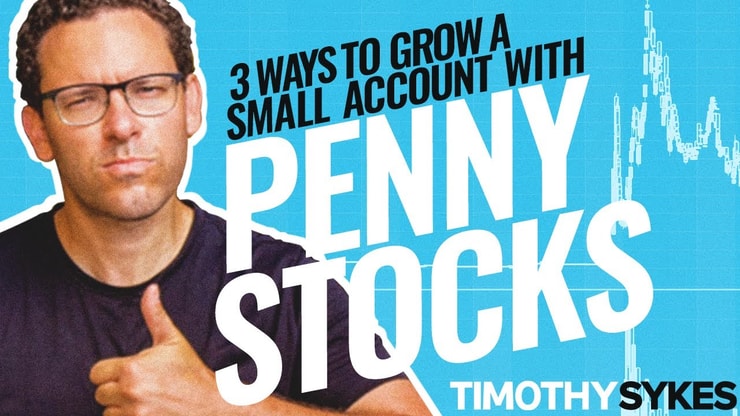The stock market is a complex ecosystem made of many different types of stocks. The types of stocks you trade can have different market capitalizations — there are small cap (market cap under $2 billion), large cap (market cap over $10 billion), and penny stock traders (that’s me).
Different types of stocks cover different businesses, are traded in different markets, and supported by different brokers. Value investors, growth investors, and Roth IRA account holders are your partners and competition in these different trading environments.
Understanding the distinct characteristics of different stock types will help you align your trading decisions with your financial goals and risk tolerance.
This article reviews the way one type of security differs from another, the place of different types of stocks in the trading world, and the trading schemes to keep in mind. Let’s get to the content!
Table of Contents
- 1 What is a Stock?
- 2 Domestic and International Stocks
- 3 Common Stock
- 4 Preferred Stock
- 5 Large-Cap, Mid-Cap, and Small-Cap Stocks
- 6 Growth Stocks
- 7 Value Stocks
- 8 IPO Stocks
- 9 Dividend Stocks and Non-Dividend Stocks
- 10 “Safe Stocks”
- 11 Income Stocks
- 12 Cyclical Stocks and Non-Cyclical Stocks
- 13 Blue Chip Stocks
- 14 ESG Stocks
- 15 Penny Stocks
- 16 Stocks Classified by Sector
- 17 Key Takeaways
What is a Stock?

Stock, in the simplest terms, represents ownership in a company. When you buy a stock, you’re purchasing a piece of the company’s assets and earnings. The more shares you own, the larger the part of the company you own.
Companies issue stocks to raise money for various purposes such as expansion, development, or debt repayment. In return, shareholders have the potential to benefit from the company’s success in the form of increased share prices and other compensation… or incur losses by the same mechanism.
Stocks come in many shapes and sizes. From large-cap to small-cap, from growth stocks to value stocks, each type has its own characteristics and appeals to different kinds of investors. To get a broader understanding of the variety of stocks out there, take a look at this article on different types of stocks.
Domestic and International Stocks
When it comes to location, you’ve got two categories: domestic and international stocks. Domestic stocks are shares in companies based in your home country. For instance, if you live in the US, stocks of companies like Microsoft (MSFT) and Coca-Cola (KO) are considered domestic stocks.
On the flip side, international stocks are shares in companies located outside your home country. Why trade internationally? It offers exposure to different economies and industries, which can provide diversification and potential for growth.
Common Stock
Common stock is perhaps the most well-known type of stock. When people speak about stocks, they are usually referring to this. As a common stockholder, you get voting rights at shareholders’ meetings and the right to receive dividends.
Investing in common stock means you’re in line to participate in the company’s success through rising share prices. But remember, you’re also exposed to the downside if things don’t go as planned.
Preferred Stock
Preferred stock, as the name suggests, comes with certain privileges that common stockholders do not enjoy. For example, in the event of bankruptcy, preferred shareholders are ahead of common shareholders when it comes to dividend payouts and asset distribution.
One key thing to remember: while preferred stockholders have a higher claim on dividends and assets, they typically do not have voting rights. It’s a trade-off.
Large-Cap, Mid-Cap, and Small-Cap Stocks

Market capitalization (market cap) is a key factor in classifying stocks. It’s calculated by multiplying the company’s stock price by its outstanding shares. Large-cap companies have valuations over $10 billion, mid-caps have equity between $2 billion and $10 billion, and small-caps have market caps under $2 billion.
Large-cap stocks (think Google, Apple) are considered safer investments by some due to their size, stability, and track record. Small-cap and mid-cap stocks are typically more volatile but offer higher growth potential.
Growth Stocks
Growth stocks belong to companies expected to grow at an above-average rate compared to other companies in the market. They are often tech companies or new industries. While they may not pay dividends, they offer the potential for substantial capital gains.
Investors are attracted to growth stocks for their potential to deliver substantial returns. However, they are often associated with higher risk due to their volatility.
Value Stocks
Value stocks are shares of companies that investors believe are selling for less than their intrinsic value. These companies are often characterized by lower price-to-earnings (P/E) ratios and may pay regular dividends.
Value investing is a more conservative approach, often favored by investors seeking steady income and less risk. It requires patience and a keen eye for undervalued opportunities.
IPO Stocks
When a company decides to go public, it launches an Initial Public Offering (IPO). Investing in IPO stocks allows investors to buy shares before they are listed on an exchange. While IPOs can offer substantial returns, they also carry a higher degree of risk.
It’s crucial to do thorough research and understand the company’s business model, revenues, and growth potential before investing in an IPO.
Dividend Stocks and Non-Dividend Stocks

Companies that share a portion of their profits with shareholders in the form of dividends are known as dividend stocks. These dividends can be reinvested or taken as cash. These stocks are particularly attractive to income-focused investors.
Non-dividend stocks, on the other hand, don’t distribute their earnings but reinvest them back into the business. Investors in these companies are betting on the company’s growth, which should, in turn, push up the share price.
“Safe Stocks”
Safe stocks, also known as defensive stocks, are shares in companies that tend to perform well during economic downturns. These are typically companies in industries such as utilities or consumer staples, which provide goods and services people continue to need regardless of the economy’s health.
Investing in safe stocks can be a strategic move to protect your portfolio during market downturns, but they may not offer as high returns as more aggressive stocks.
Income Stocks
Income stocks consistently pay higher than average dividends over time. They’re usually large, established companies with a steady cash flow – think utility companies or real estate investment trusts (REITs).
Income stocks are a popular choice for investors looking for steady income streams, especially during times of low-interest rates.
Cyclical Stocks and Non-Cyclical Stocks

Cyclical stocks are influenced by macroeconomic conditions and cycles. They do well when the economy is booming and underperform in a period of contraction. Examples include auto companies and luxury goods providers.
Non-cyclical stocks, also known as defensive stocks, provide products or services that are always in demand, like food, utilities, and healthcare. They tend to remain stable regardless of the economy’s status.
Blue Chip Stocks
Blue chip stocks are shares in large, well-established companies with a history of reliability and strong performance. They’re often leaders in their industries, with a solid track record of stability, reliability, and strong performance.
Examples of blue-chip companies include Google (GOOG), Microsoft (MSFT), and Apple (AAPL). Investing in these stocks can add stability to your portfolio, especially during volatile market conditions.
ESG Stocks
ESG stands for Environmental, Social, and Governance. ESG stocks belong to companies that meet specific criteria in these areas, showing commitment to environmental responsibility, social justice, and transparent governance.
ESG investing has been gaining traction, offering investors the opportunity to make money while making a positive impact on society and the environment.
Penny Stocks
Penny stocks are low-priced, small-cap stocks, typically trading for less than $5 per share. They are highly speculative and carry risks, but their cost basis has the potential for significant returns.
If you’re interested in learning more about these low-priced stocks, check out my guide to penny stocks.
Stocks Classified by Sector
The stock market is divided into 11 sectors, each representing a particular industry. The sectors include healthcare, technology, finance, utilities, and more. Investing in different sectors can provide diversification, which is an important strategy to manage risk in your portfolio.
Understanding sector dynamics can help you make informed investment decisions. For instance, the technology sector may offer high growth potential, while the utility sector might offer stability and regular dividends.
Learning about these sectors is key to understanding the market as a whole. For a deeper dive into how sectors shape the stock market, check out this article on different stock sectors.
Key Takeaways

Trading stocks is not a one-size-fits-all strategy. There are numerous types of stocks, each with their unique features, risk levels, and potential returns. Your trading strategy should align with your financial goals and risk tolerance.
From blue-chip stocks offering stability to growth stocks providing high return potential, understanding the types of stocks can help you make informed trading decisions. Always remember, knowledge is power, especially when it comes to trading in the stock market.
Trading isn’t rocket science. It’s a skill you build and work on like any other. Trading has changed my life, and I think this way of life should be open to more people…
I’ve built my Trading Challenge to pass on the things I had to learn for myself. It’s the kind of community that I wish I had when I was starting out.
We don’t accept everyone. If you’re up for the challenge — I want to hear from you.
Apply to the Trading Challenge here.
Trading is a battlefield. The more knowledge you have, the better prepared you’ll be.
What types of stocks do you trade? Let me know in the comments — I love hearing from my readers!





Leave a reply